Brief history
Prince Bořivoj, an early Christian, founded the first Czech dynasty in 870, and his grandson, Prince Václav (the Good King Wenceslas of the song), became the Czech patron saint before being offed by his younger brother Boleslav I. Prague experienced a golden age under the urbane emperor, Charles IV, a polylingual patron of the arts whose court was the heart of fourteenth-century Europe. Charles founded the university and as well as an entire new quarter, Nové Město, built the Charles Bridge and St Vitus’ Cathedral. A long period of Austro-Hungarian rule gave Prague its Teutonic facades and high-minded coffeehouses, while the National Revival reasserted the Slavic identity of the city and the onion dome rose again. The short-lived First Republic, modelled on American democracy, crashed when Nazi troops marched into Czechoslovakia, and President Beneš’s decision to accept German “protection” was a dark moment in the nation‘s history, but saved the city from decimation. In 1948 Communism arrived in a wave of stained concrete, bringing a few architectural pearls along with the swine. The period since ’89 has seen rapid construction, but with a few exceptions, such as Jean Nouvel’s Golden Angel mall and the playful Dancing House, it’s been conservative and timid. Not so the restaurants, hotels, bars and clubs, which have re-awoken Prague’s slumbering decadence.
Best time to visit
Lying at the heart of central Europe, Prague has a continental climate: winters can be bitterly cold, summers correspondingly baking. The best time to visit Prague, in terms of weather, is either late spring and early autumn.
Summer in the city can be stifling, but the real reason for avoiding the peak season is that it can get uncomfortably crowded in the centre – finding a place to eat in the evening, let alone securing a room, can become a trial.
If you’re looking for good weather, April is the earliest you can guarantee at least some sunny days, and October is the last warm month.
The city looks beautiful under winter’s snowy blanket, though it does get very cold, and it can also fall prey to “inversions”, which smother the city in a hazy grey smog for a week or sometimes more.
Basilica of St George
The Basilica of St George (Bazilika sv Jiří), with its beautiful Romanesque interior, was originally built in 1173. Concerts are often held here. The nearby Convent of Saint George houses a collection of sixteenth- to eighteenth-century Czech art.
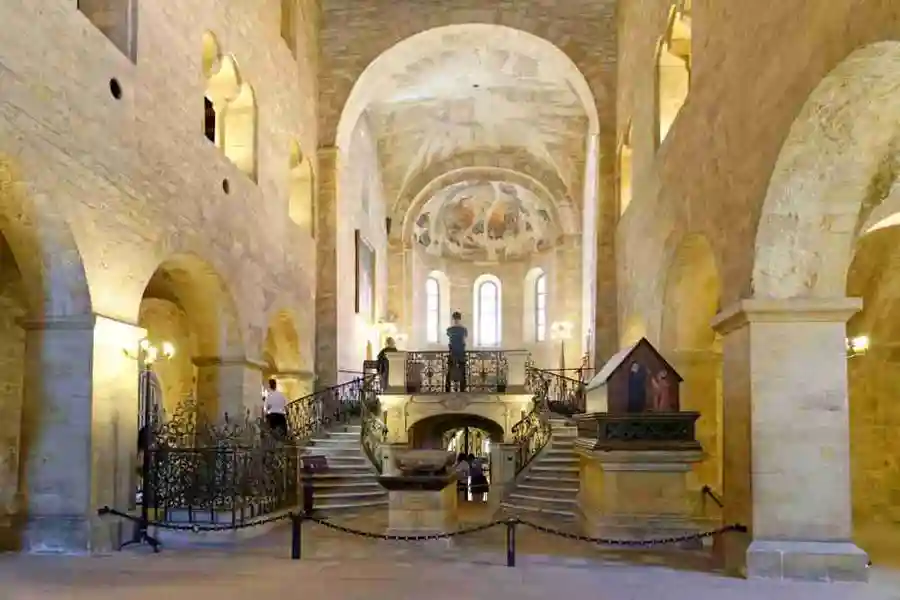
Charles Bridge
Linking Malá Strana to Staré Město is Prague’s most celebrated landmark, the Charles Bridge (Karlův most), built in 1357. At the centre is Czech patron saint John of Nepomuk, thrown off the bridge by Wenceslas IV for refusing to divulge the queen’s confessions. It’s best seen at dawn, or late at night, when the crowds are gone.
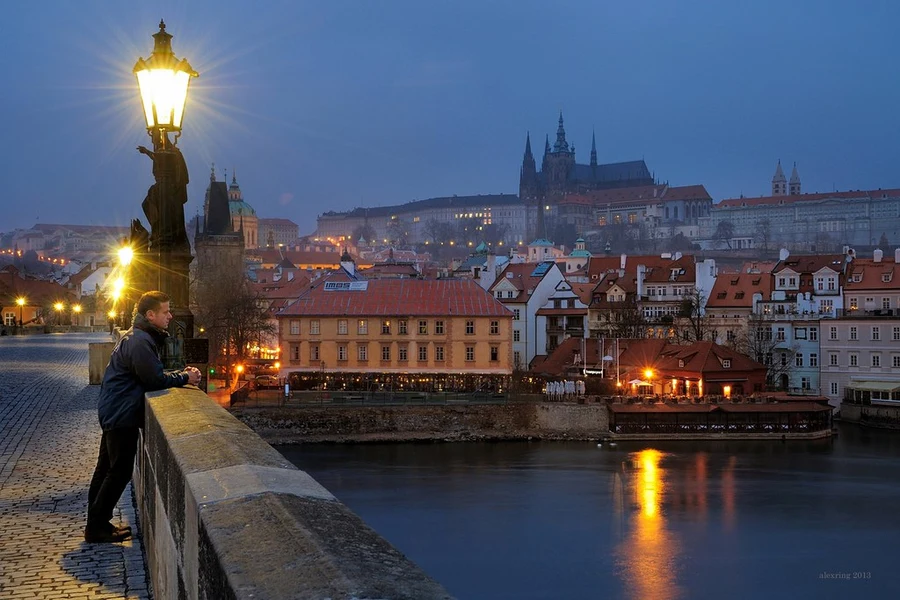
DOX Centre for Contemporary Art
Dox showcases modern painting, sculpture, architecture, design and photography. Though still a newcomer, it’s hosted the likes of Andy Warhol and Damian Hirst, as well as Czechs like sculptor David Černý and émigré architect Jan Kaplický.

Franz Kafka
Franz Kafka was born in 1883 to middle-class Czech Jewish parents who ran a haberdashery in Old Town. His ambivalent relationship with Prague is reflected in his trademark tone of anxious claustrophobia – “A cage went in search of a bird”, he once jotted in a notebook. You can see the building where he slaved away as a clerk at na poříčí 7, and his homes on Golden Lane (no. 22) and Old Town Square (Oppelt building). Kafka went to fortnightly meetings at Café Louvre and also frequented Café Savoy in Malá Strana, where he first met the actor Isaac Lowy, who re-awakened his interest in Jewish culture. At the Kafka Museum at Cihelna 2b you can see first editions and manuscripts, personal letters, diaries and drawings – a peephole into one of the most intriguing minds of the twentieth century.
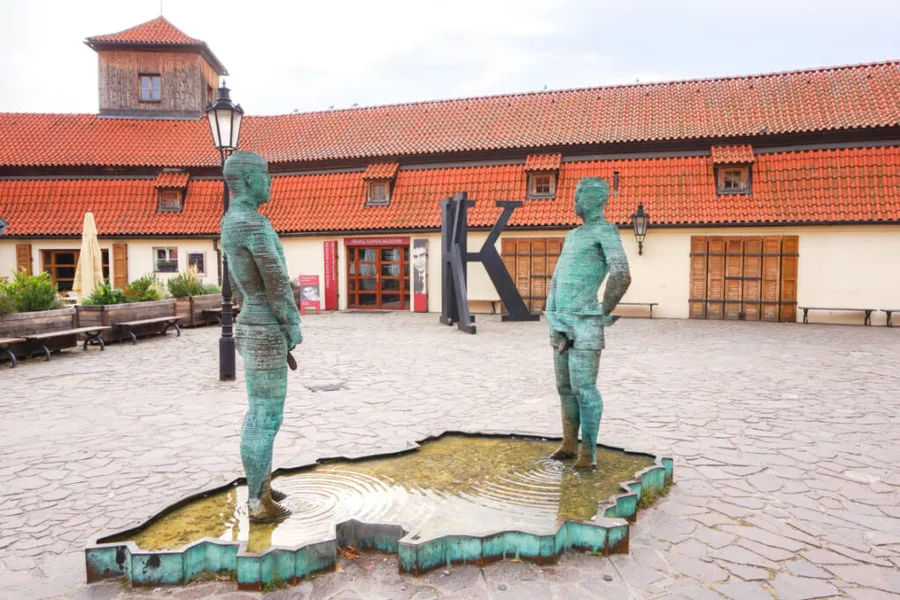
Golden Lane
Golden Lane (Zlatá ulička), round the corner from the basilica, is a street of toy-sized tradesmens’ cottages, as bright and compact as a watercolour box. Franz Kafka briefly lived at no. 22, his sister’s house, during World War I.
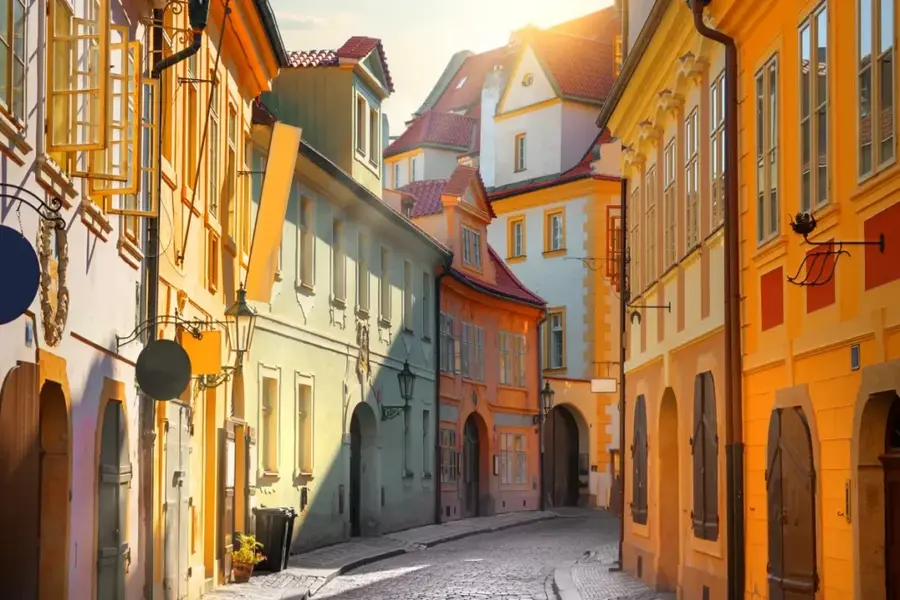
Hradčanské náměstí
Aristocratic palaces lie across Hradčanské náměstí like a pod of beached whales. A passage down the side of the Archbishop’s Palace leads to Šternberg Palace, home to a European art collection that contains pieces by Rubens, Cranch and El Greco. At Jiřská 3 is Lobkowicz Palace, full of aristocratic bric-a-brac. A passage at Pohořelec 8 leads to Strahov Monastery (Strahovský klášter) with its exquisite Baroque library, which displays peculiar and sublime artifacts from illuminated manuscripts to dried whale penises.
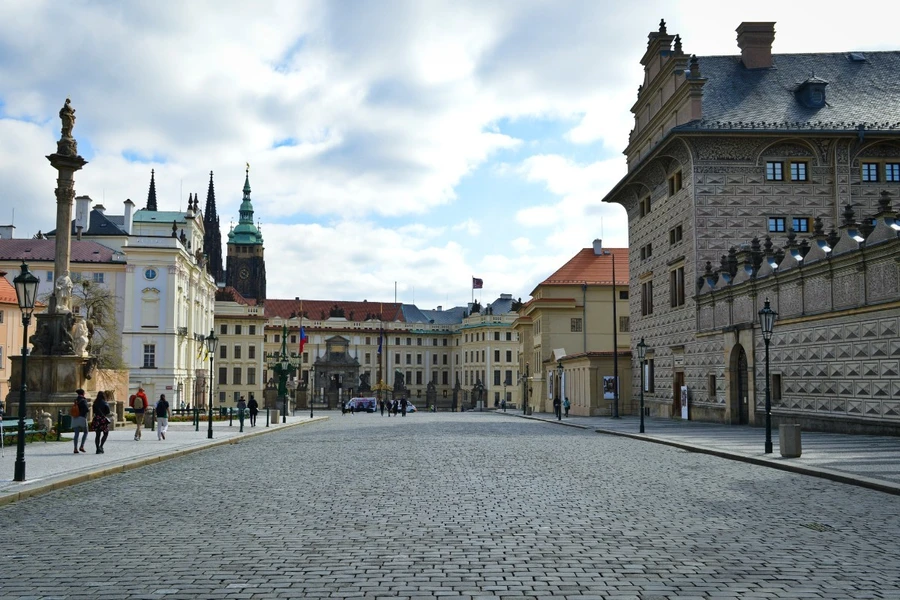
Josefov
Northwest of Old Town Square is Josefov, a mixture of narrow cobbled streets – the remains of the old Jewish ghetto, and wide Art Nouveau boulevards – the legacy of 1890s slum clearance.
The Old Jewish Cemetery is a poignant reminder of the ghetto, its inhabitants overcrowded even in death. To the south is the Pinkas Synagogue, inscribed with the names of 80,000 Czechoslovak Jews killed by the Nazis. The Old–New Synagogue, Europe’s oldest synagogue, is the heart of Prague’s Jewish community. Opposite is the Jewish Town Hall (Židovská radnice), with its distinctive anticlockwise clock. East of Pařížská is the gorgeous neo-Byzantine Spanish Synagogue (Španělská synagoga), which hosts classical concerts.
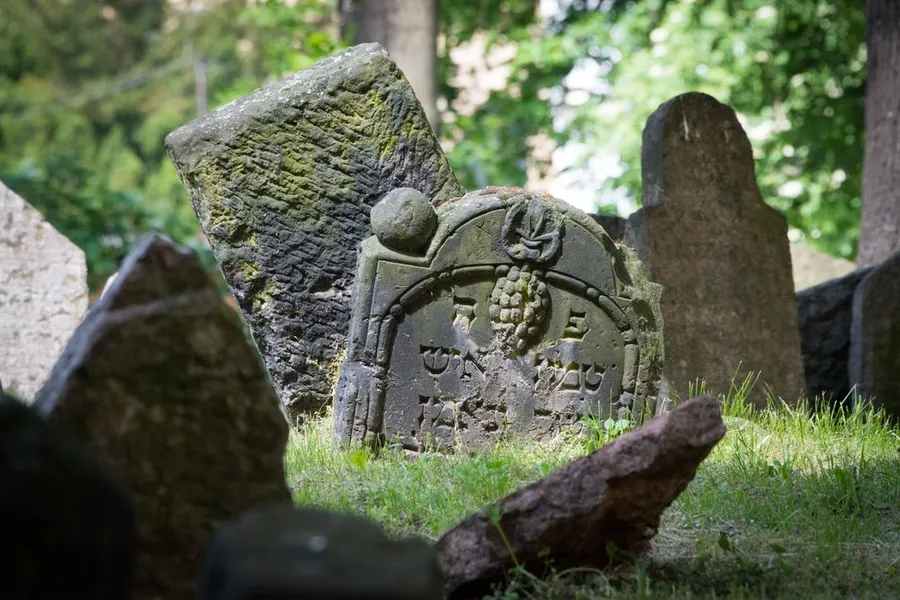
Mucha Museum
The Mucha Museum, at Panská 7, is dedicated to the Czech Art Nouveau designer and painter Alfons Mucha.
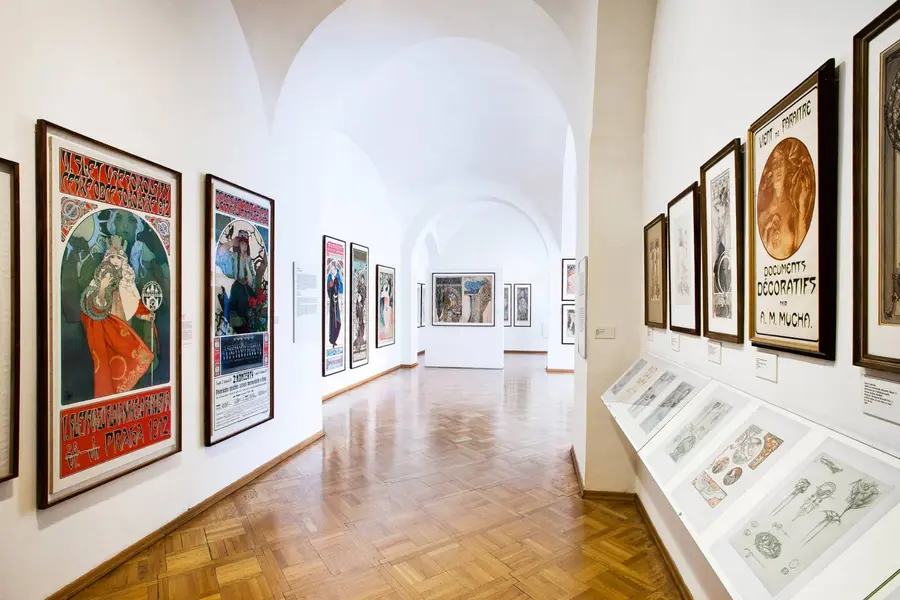
Museum of Communism
Situated, with delicious irony, above McDonalds, the Museum of Communism at Na Přikopě 10 draws a detailed picture of life behind the Iron Curtain in all its grim monotony, from propaganda and labour camps to shopping and TV.
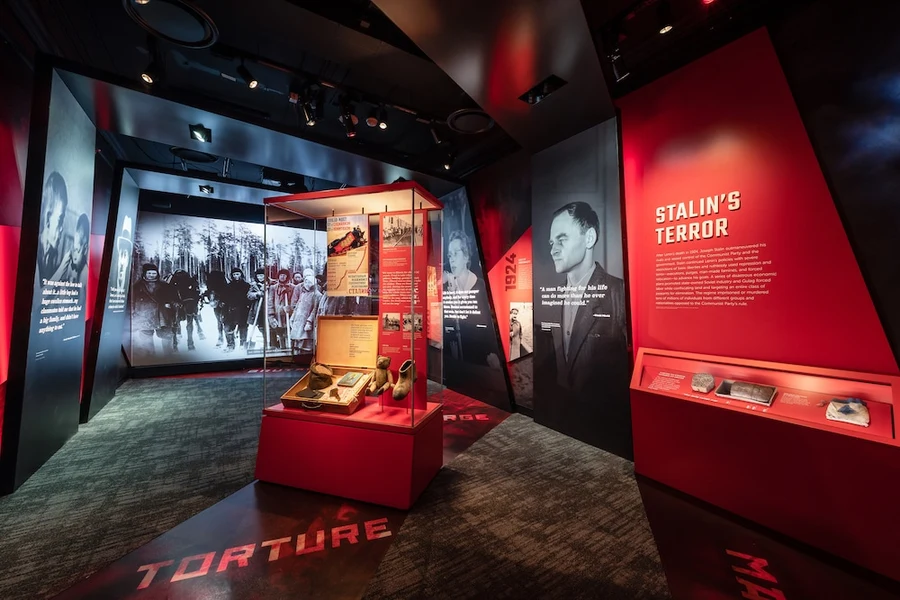
Museum of Decorative Arts
The Museum of Decorative Arts, a neo-Renaissance palace opposite the Rudolfinum, shows a splendid collection of glass, clothes, pottery, clocks, dresses and other ephemera of daily life spanning a thousand years.
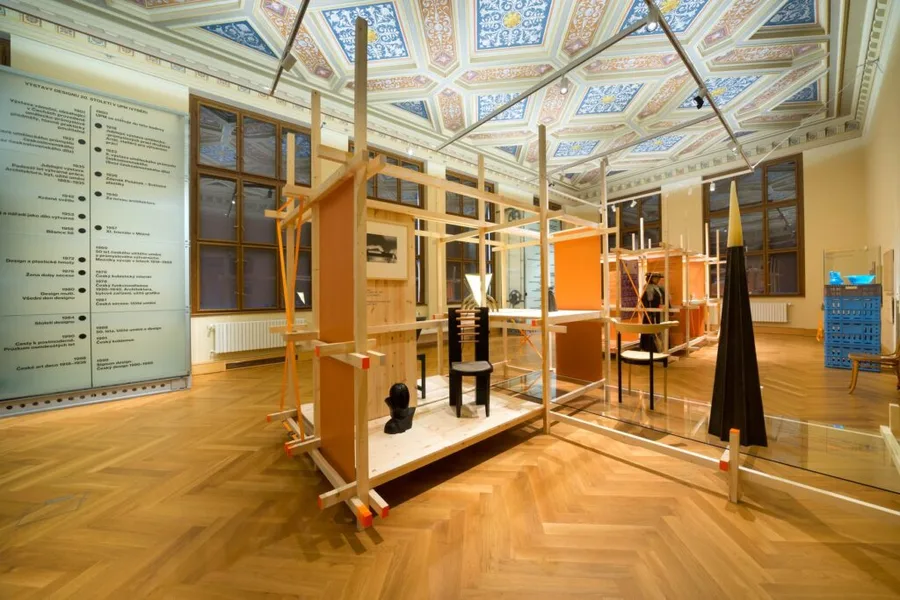
Obecní Dům
Squatting ponderously on one edge of náměstí Republiky is Obecní dům (the Municipal House), a delightful example of Czech Art Nouveau containing a concert hall, restaurant, café and frescoes by Mucha. You can get in by taking the overpriced guided tour, or drink tea in the gilded café for rather less.
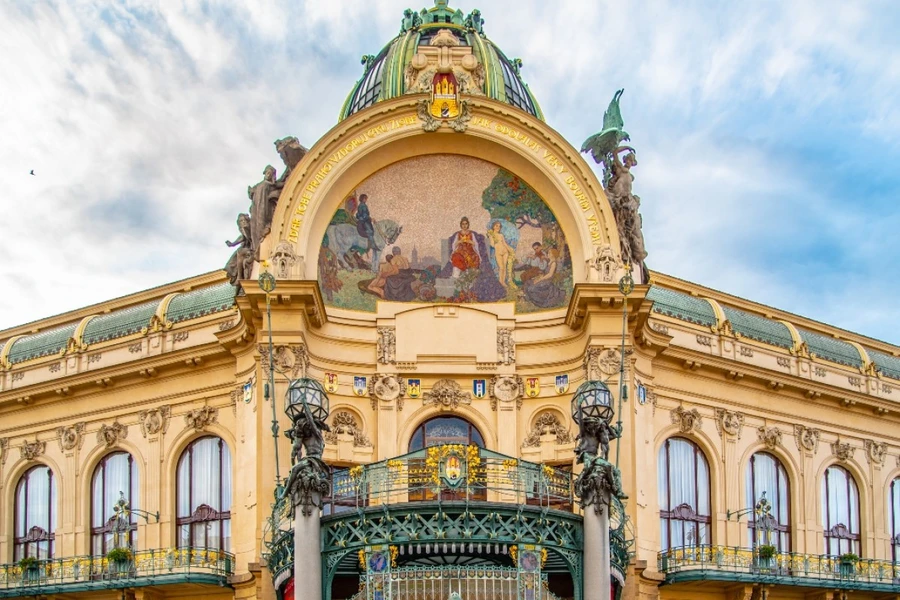
Old Royal Palace
The Old Royal Palace (Starý královský palác), across the courtyard from the south door of the cathedral, was home to Bohemian royalty from the eleventh to the seventeenth centuries. The massive Vladislav Hall (Vladislavský sál) where the early Bohemian kings were elected, is now used for swearing Czech presidents into office.
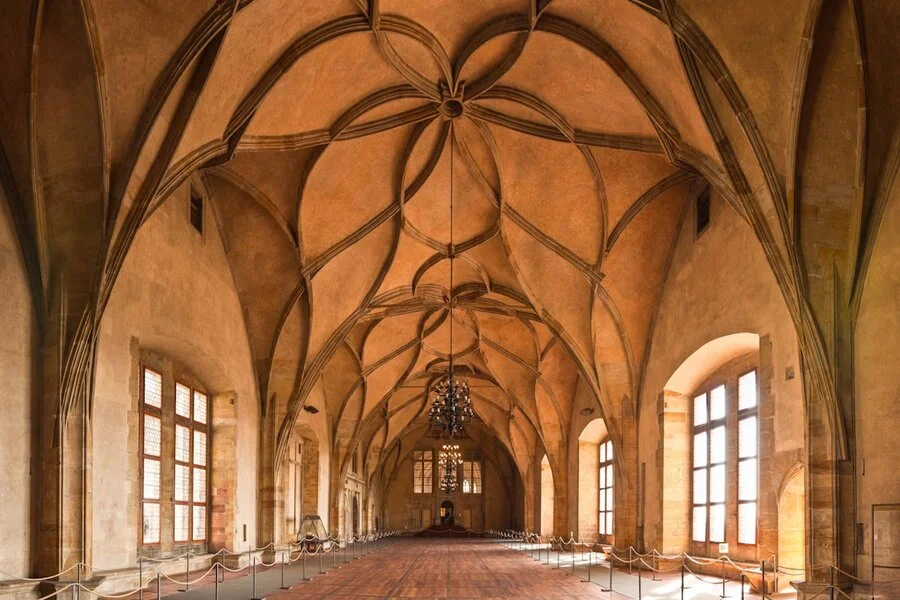
Petřín
Head south down Karmelitská and you will see Petřín hill rising above, a bucolic spot ideal for a picnic. Above the funicular railway is Eiffel Tower lookalike Petřín Tower, which you can climb or ascend by lift.
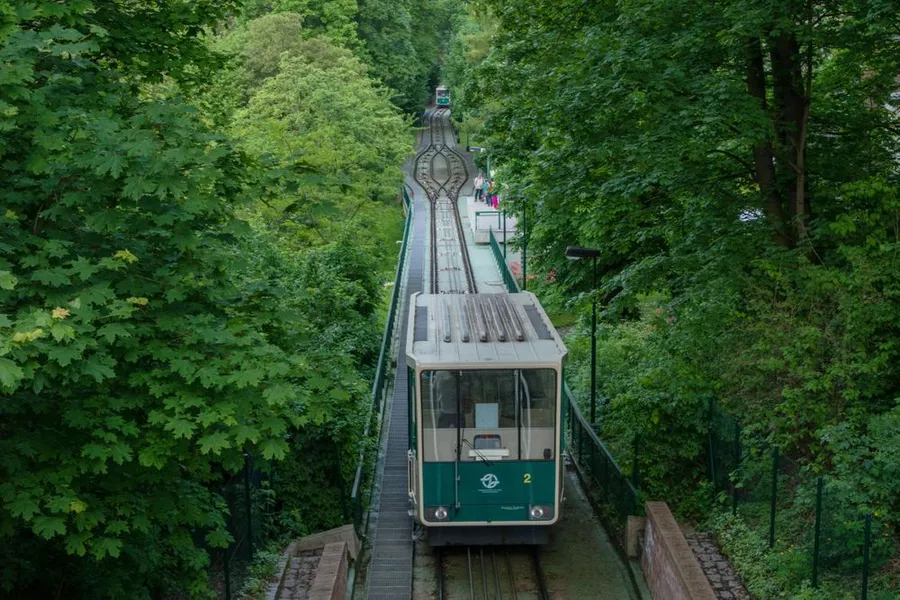
Places to visit
With a population of just one and a quarter million, Prague (Praha to the Czechs) is relatively small as capital cities go. It originally developed as four separate self-governing towns and a Jewish ghetto, whose individual identities and medieval street plans have been preserved, to a greater or lesser extent, to this day.
Almost everything of any historical interest and many of the best places to visit in Prague lie within these compact central districts, the majority of which are easy to explore quickly on foot. Only in the last hundred years has Prague spread beyond its ancient perimeter, and its suburbs now stretch across the hills for miles on every side.
Prague is divided into two unequal halves by the River Vltava. The steeply inclined left bank is dominated by the castle district of Hradčany, which contains the city’s most obvious sight: Pražský Hrad or Prague Castle (known simply as the Hrad in Czech), home to the city’s cathedral, and the old royal palace and gardens, as well as a host of museums and galleries.
Squeezed between the castle hill and the river are the picturesque Baroque palaces and houses of Malá Strana – a neighbourhood of twisting cobbled lanes and secret walled gardens – home to the Czech parliament and some of the city’s embassies, and dominated by the green dome and tower of the church of Sv Mikuláš.
At the southern end of Malá Strana, a funicular railway carries you away from the cramped streets to the top of Petřín hill, the city’s most central leafy escape, with a wonderful view across the river and historical centre.
The city’s labyrinth of twisting streets is at its most bamboozling in the original medieval hub of the city, Staré Město – literally, the “Old Town” – on the right bank of the Vltava. Karlův most, or Charles Bridge, its main link with the opposite bank, is easily the most popular historical monument, and the best place from which to view Prague Castle. Staré Město’s other great showpiece is its main square, Staroměstské naměstí (Old Town Square), where you can view Prague’s famous astronomical clock and its lively hourly show.
Enclosed within the boundaries of Staré Město is the former Jewish quarter, or Josefov. The ghetto walls have long since gone and the whole area was remodelled at the turn of the twentieth century, but various synagogues, a medieval cemetery and a town hall survive as powerful reminders of a community that has existed here for more than a millennium.
South and east of the Old Town is the large sprawling district of Nové Město, whose main arteries make up the city’s commercial and business centre. The heart of Nové Město is Václavské naměstí (Wenceslas Square), focus of the political upheavals of the modern-day republic.
Further afield lie various suburbs, most of which were developed only in the last hundred years or so. One exception is Vyšehrad, which was among the original fortress settlements of the newly arrived Slavs more than a thousand years ago and is now the final resting-place of leading Czech artists of the modern age, including composers Smetana and Dvořák.
To the east is the eminently desirable residential suburb of Vinohrady, peppered with gentrified parks and squares, and neighbouring Žižkov, whose two landmarks – the Žižkov monument and the futuristic TV tower – are visible from far and wide.
Nineteenth-century suburbs also sprang up to the north of the city centre in Holešovice, now home to Prague’s main modern art museum, Veletržní palác. The area boasts two huge swathes of greenery: the Letná plain, overlooking the city, and the Stromovka park, beyond which lie the chateau of Troja and the zoo. Further west, leafy interwar suburbs like Dejvice and Střešovice, dotted with modernist family villas, give an entirely different angle on Prague.
Prague’s outer suburbs, where most of the population lives, are more typical of the old Eastern Bloc, dominated by bleak high-rise housing estates known locally as paneláky. However, once you’re clear of the city limits, the traditional, provincial feel of Bohemia (Čechy) makes itself felt.
Many locals own a chata, or country cottage, somewhere in these rural backwaters, and every weekend the roads are jammed with folk heading for the hills. Few places are more than an hour from the city by public transport, however, making day-trips relatively easy.
The most popular places to visit are the castles of Karlštejn and Konopiště, both surrounded by beautiful wooded countryside. Alternatively you can head north, away from the hills and the crowds, to the wine town of Mělník, perched high above the confluence of the Vltava and Labe (Elbe) rivers.
Further north is Terezín, the wartime Jewish ghetto that is a living testament to the Holocaust. One of the most popular day-trips is to the medieval silver-mining town of Kutná Hora, 60km to the east, which boasts a glorious Gothic cathedral and a macabre ossuary.
Prague Castle
Once the heart of the Holy Roman Empire, Prague Castle is home to the Czech president and crown jewels. Wandering is free, but to enter the buildings you need to buy a ticket at the Castle Information Centre, opposite the cathedral entrance.
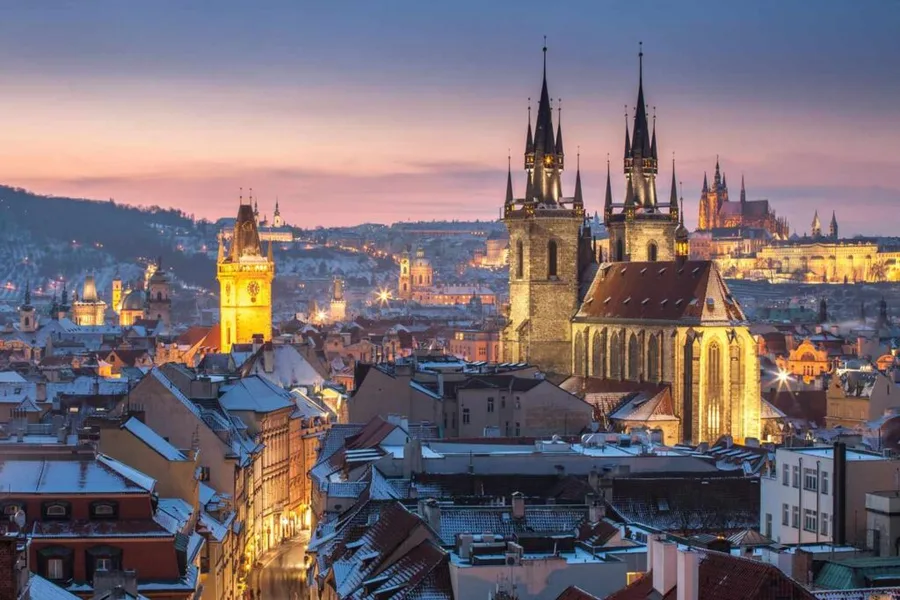
The Royal Gardens
North of the castle walls, you can cross the Powder Bridge (Prašný most) to reach the Royal Gardens (Královská zahrada), and enjoy the view over Little Quarter surrounded by fountains, sloping lawns and almond trees.
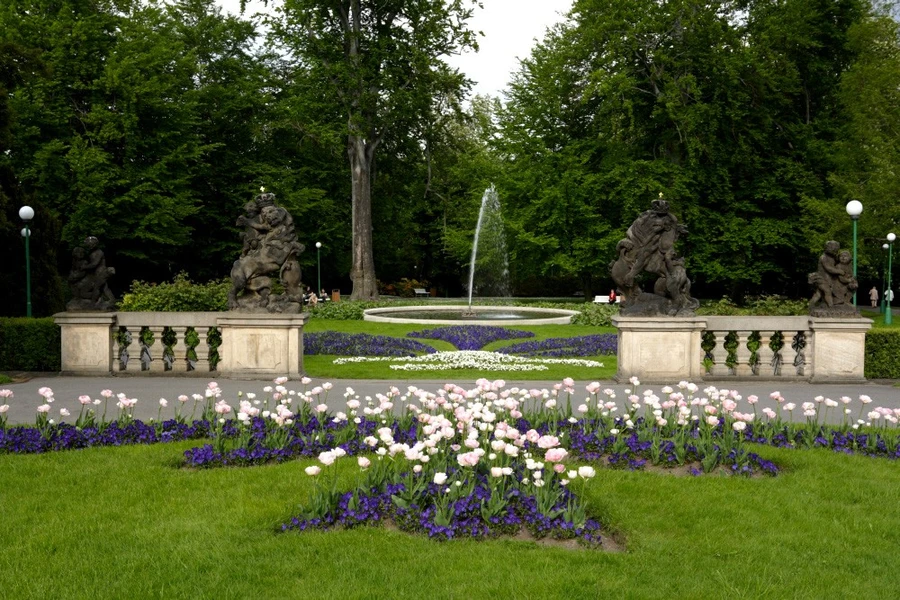
Staroměstské náměstí
Staroměstské Náměstí (Old Town Square) has been the city’s main marketplace since the eleventh century. On the west side is the medieval astronomical clock (Pražský orloj), which gives a mechanical show featuring saints, deadly sins and Jesus every hour 9am–9pm. Opposite are the dour Gothic steeples of Týn Church; if you look closely one steeple is slightly bigger – they represent Adam and Eve. In the centre of the square is the Jan Hus Monument, built in 1915 to mark the 500th anniversary of the Protestant reformer’s execution.
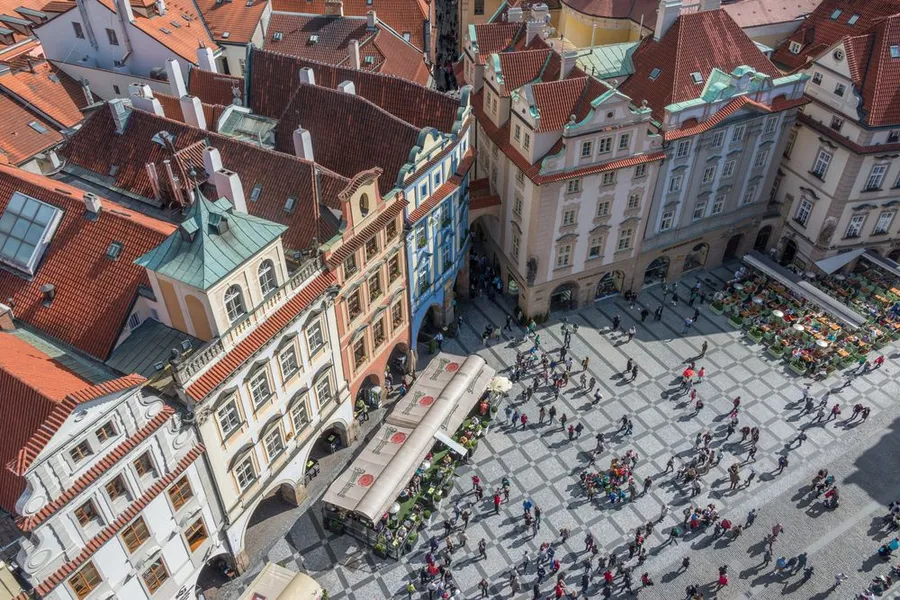
St Vitus’ Cathedral
Medieval St Vitus’ Cathedral, which broods over the Prague skyline, is scarcely visible close up; the Third Courtyard surrounds it too tightly. The Chapel of sv Václav, by the south door, was built in the fourteenth century to commemorate the Czech prince Saint Wenceslas (Václav), murdered by his brother Boleslav I. A door in the south wall leads to the coronation chamber, which houses the crown jewels.
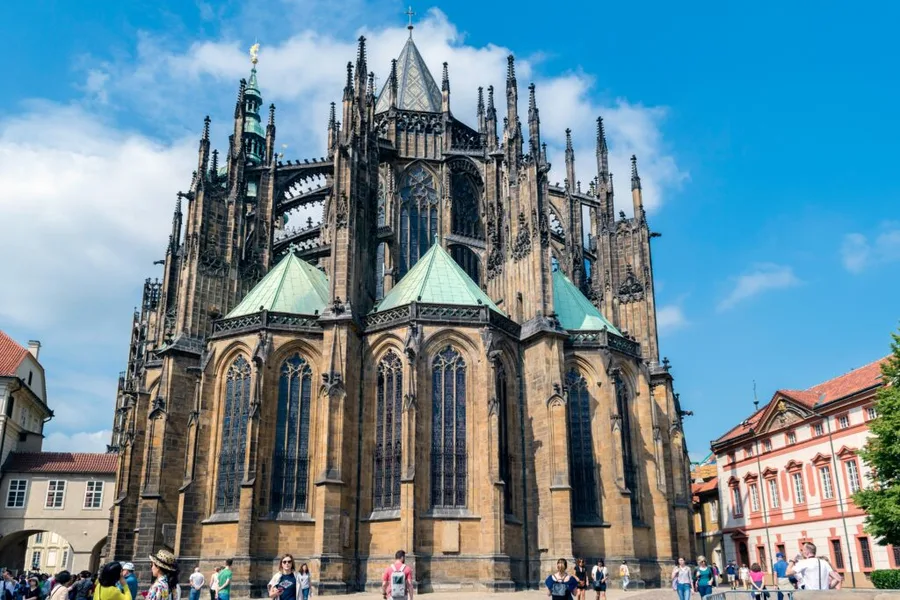
Sv Mikuláš
Malostranské náměstí, the main square in Malá Strana, forms a ring around the flamboyant church sv Mikuláš, a triumph of Baroque whimsy.
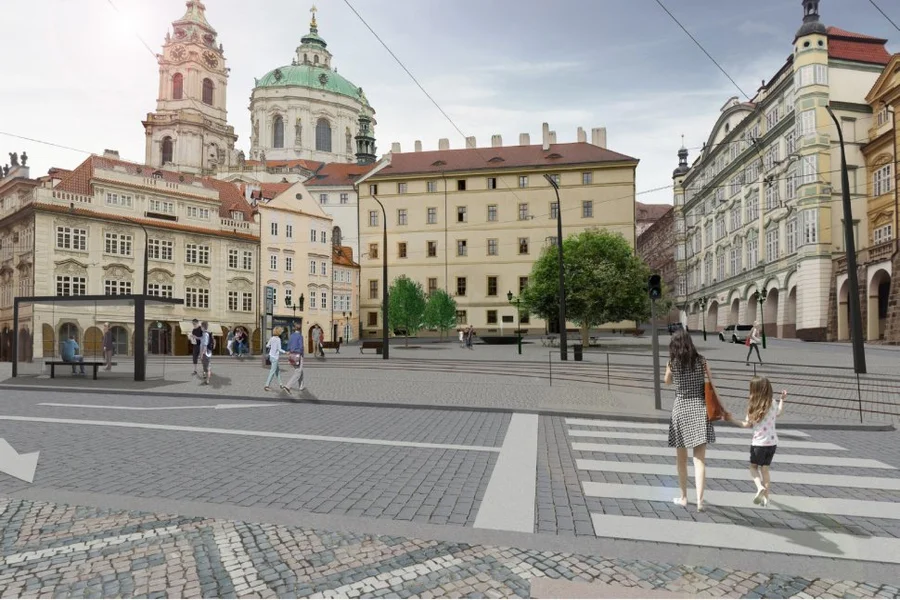
Mala Strana’s Palace Gardens
Hidden behind the palaces of Mala Strana, these terraced gardens are the perfect inner-city escape.
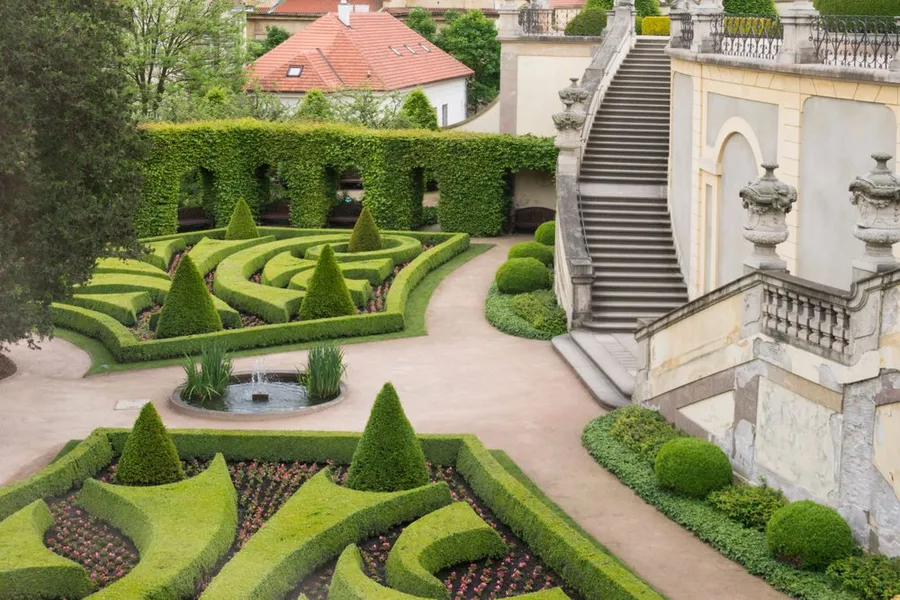
Pubs
With the best beer in the world on tap, Prague’s pubs are unmissable.
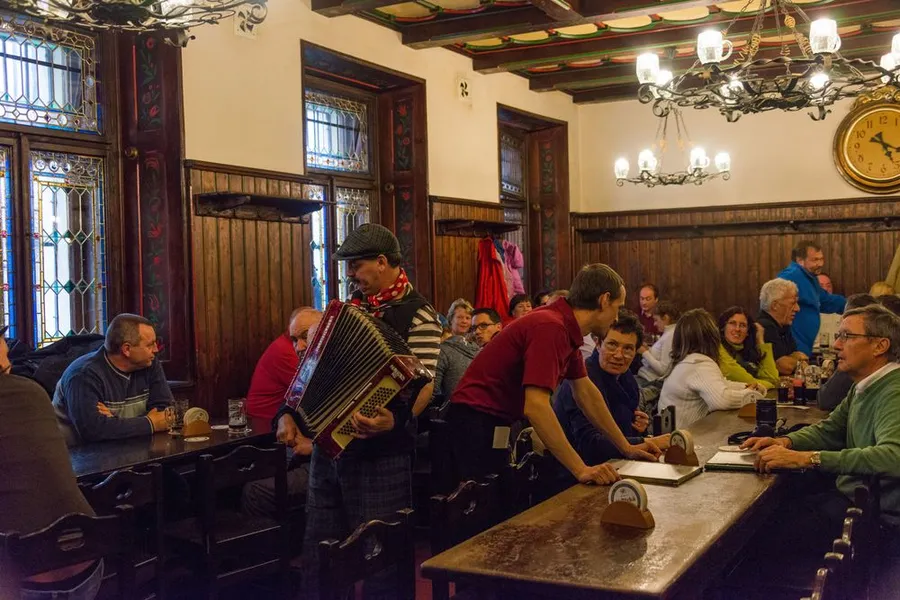
Veletrzni Palac (Trade Fair Palace)
The city’s main modern art gallery is housed in a functionalist masterpiece.
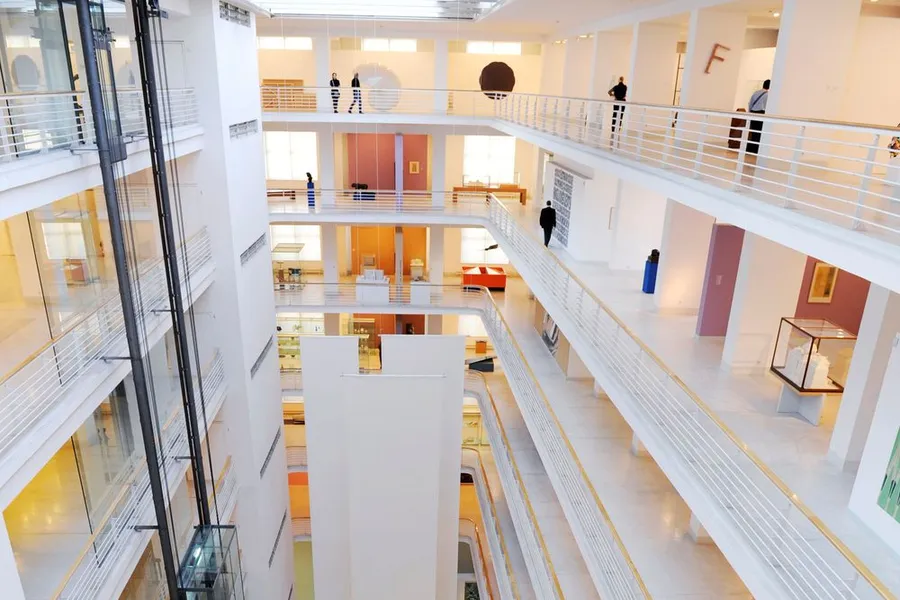
Sv Mikulas
Experience the theatre of the high Baroque in this Mala Strana landmark.
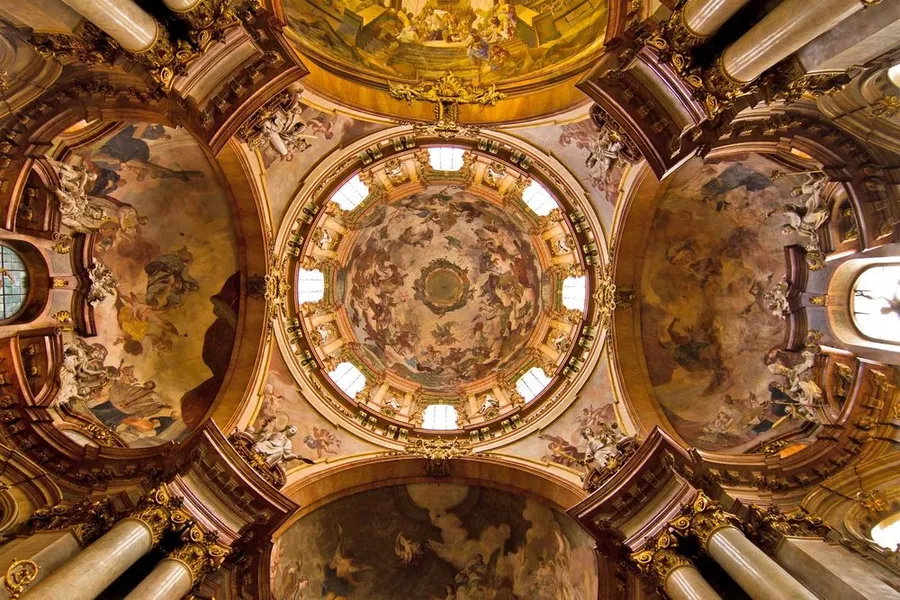
UPM
Stylish applied art museum highlighting the country’s cultural heyday.
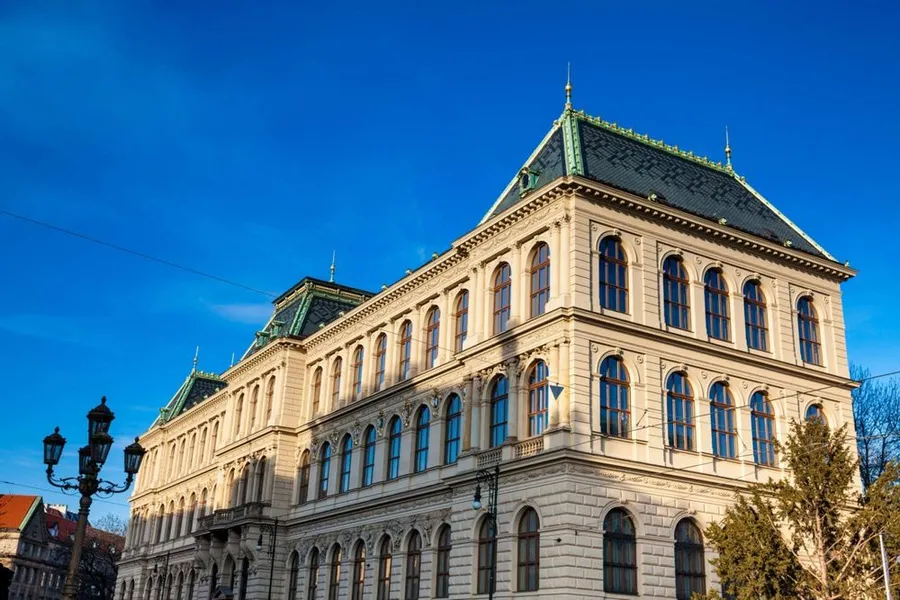
Prazsky Hrad (Prague Castle)
The city’s most spectacular landmark, home to the cathedral, royal palace and a host of museums and galleries.
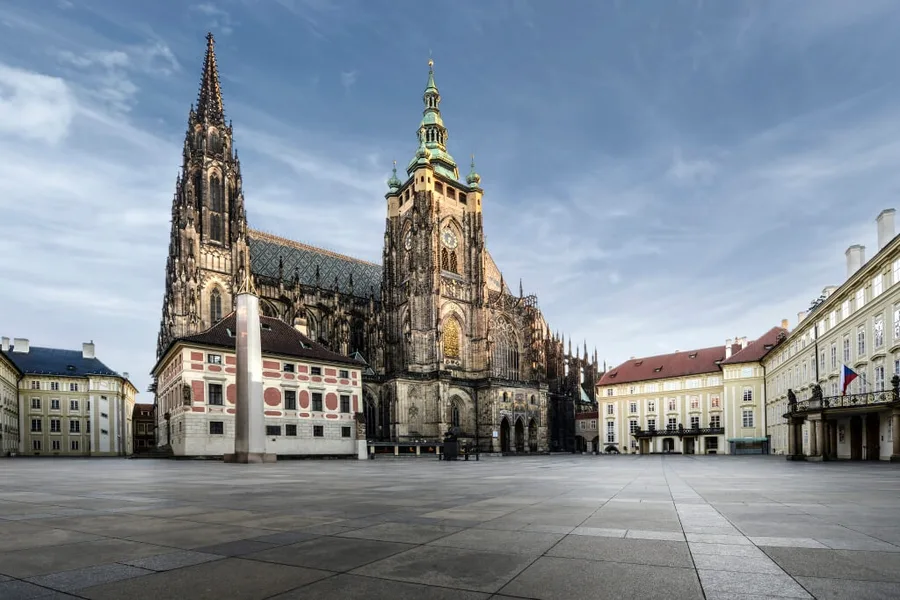
Pasaze shopping
Enjoy window-shopping in the covered malls, or Pasaze, on and around Wenceslas Square.
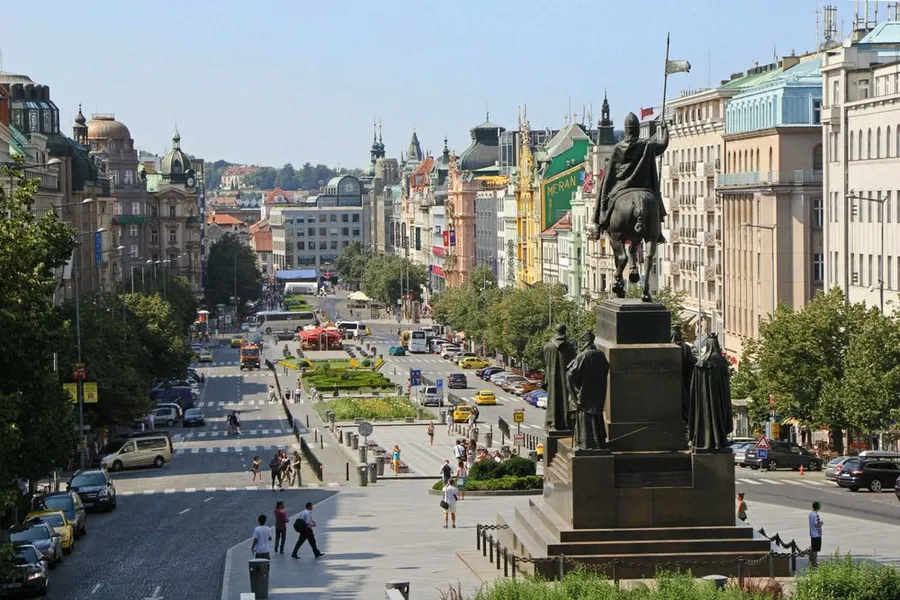
Karluv Most (Charles Bridge)
Prague’s exquisite Medieval stone bridge, lined with Baroque statuary.
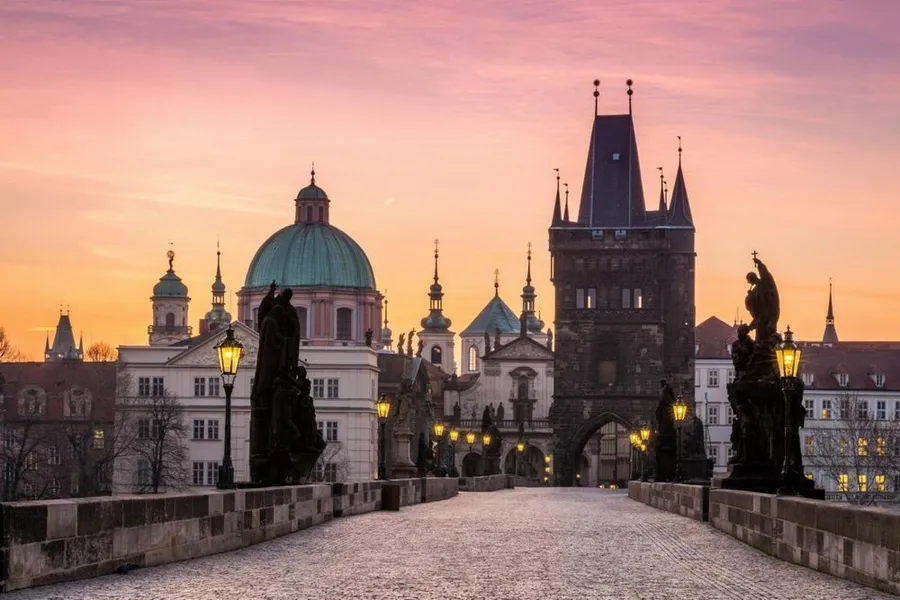
Vysehrad
Leafy, riverside fortress boasting an important cemetery and cubist architecture.
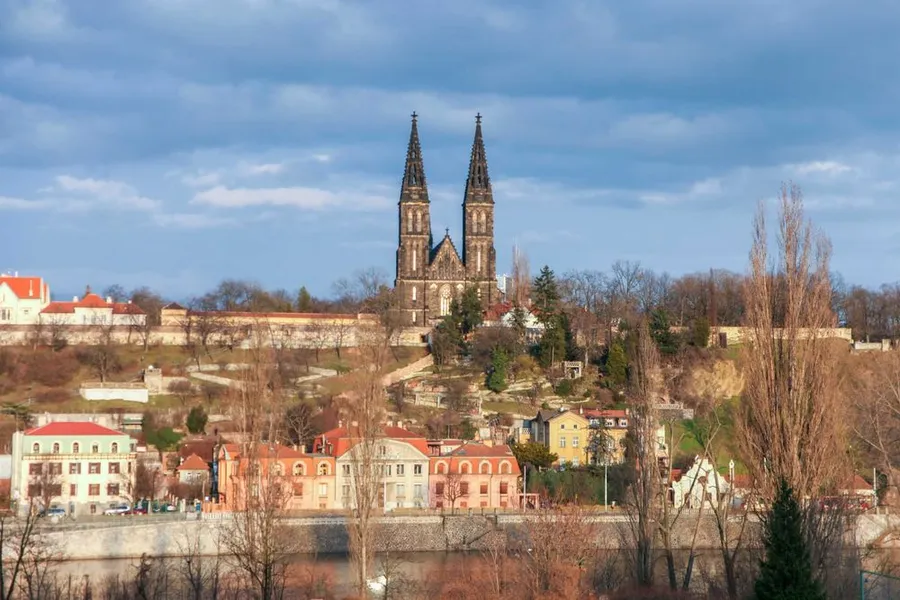
Karlstejn castle
Fabulous treasure trove built by Holy Roman Emperor Charles IV.
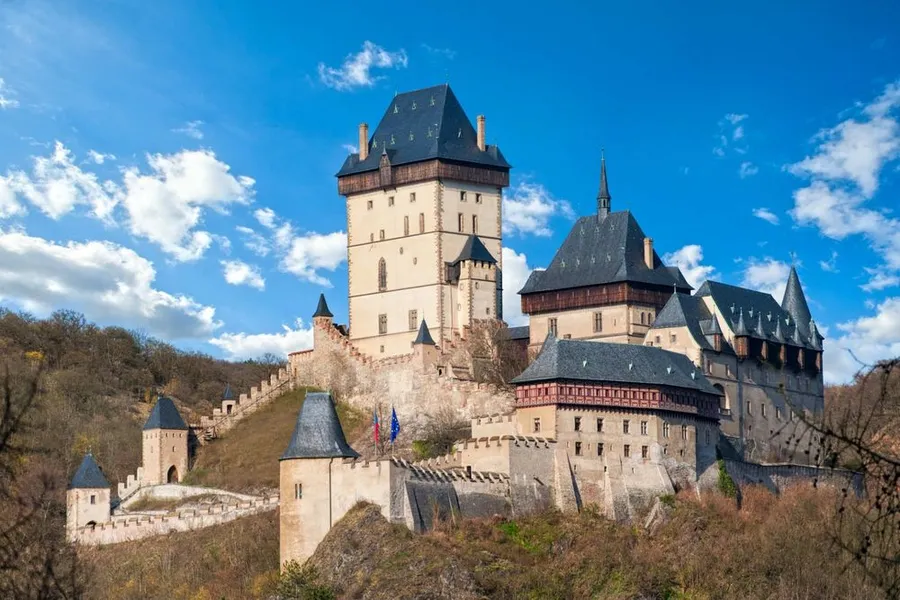
The Czech Republic. With its rich history, splendid architecture, and picturesque landscapes, this enchanting country invites you to discover more , For more places to visit in Czech Republic
Accommodation
Prague has hundreds of hotels and hostels, and prices are similar to any other European capital.
Discover the best hotels at the best price in Prague
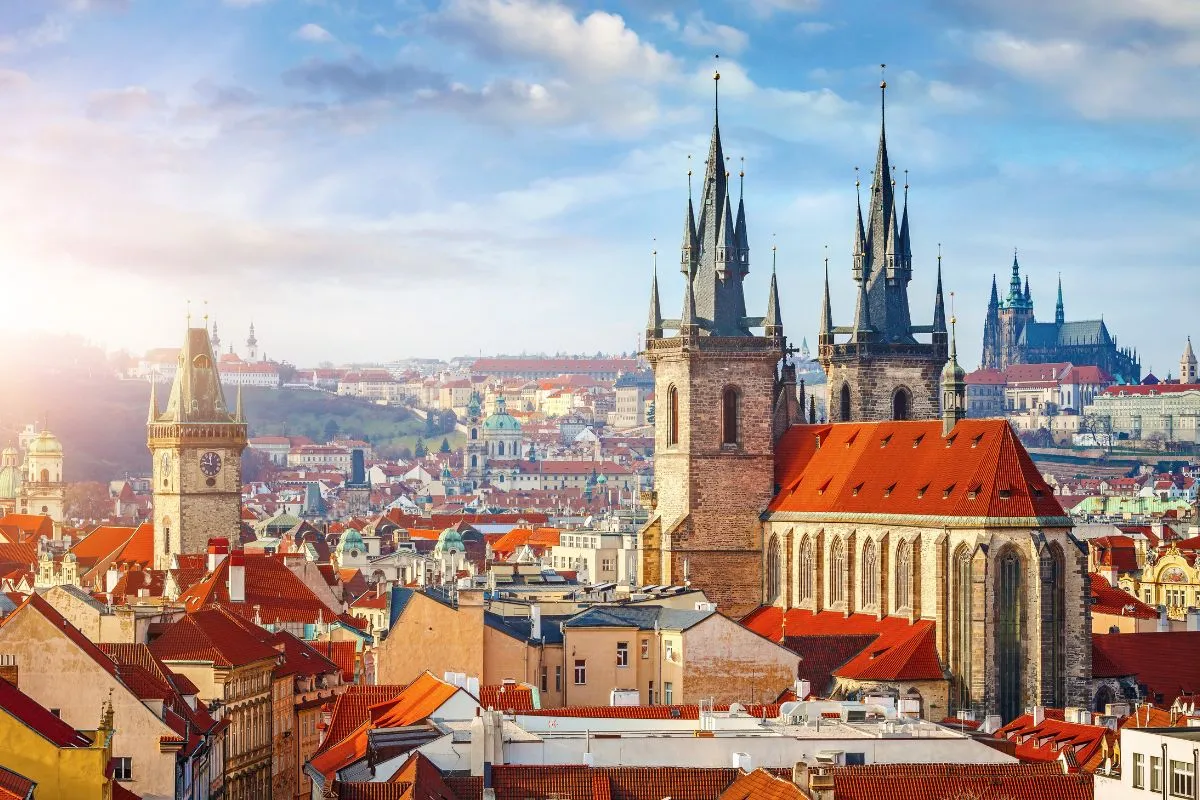
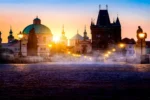
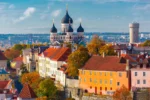





















[…] “Prague never lets you go,” said Franz Kafka, “this dear little mother has claws”. Prague also gets her golden claws into tourists, and few ever make it outside the capital. But those who tear themselves away won’t be sorry. The colonnade- and park-filled spa towns, Bohemia’s Renaissance breweries and hilltop ruins, and Moravia’s rolling hills are among the many best things to do in the Czech Republic. […]